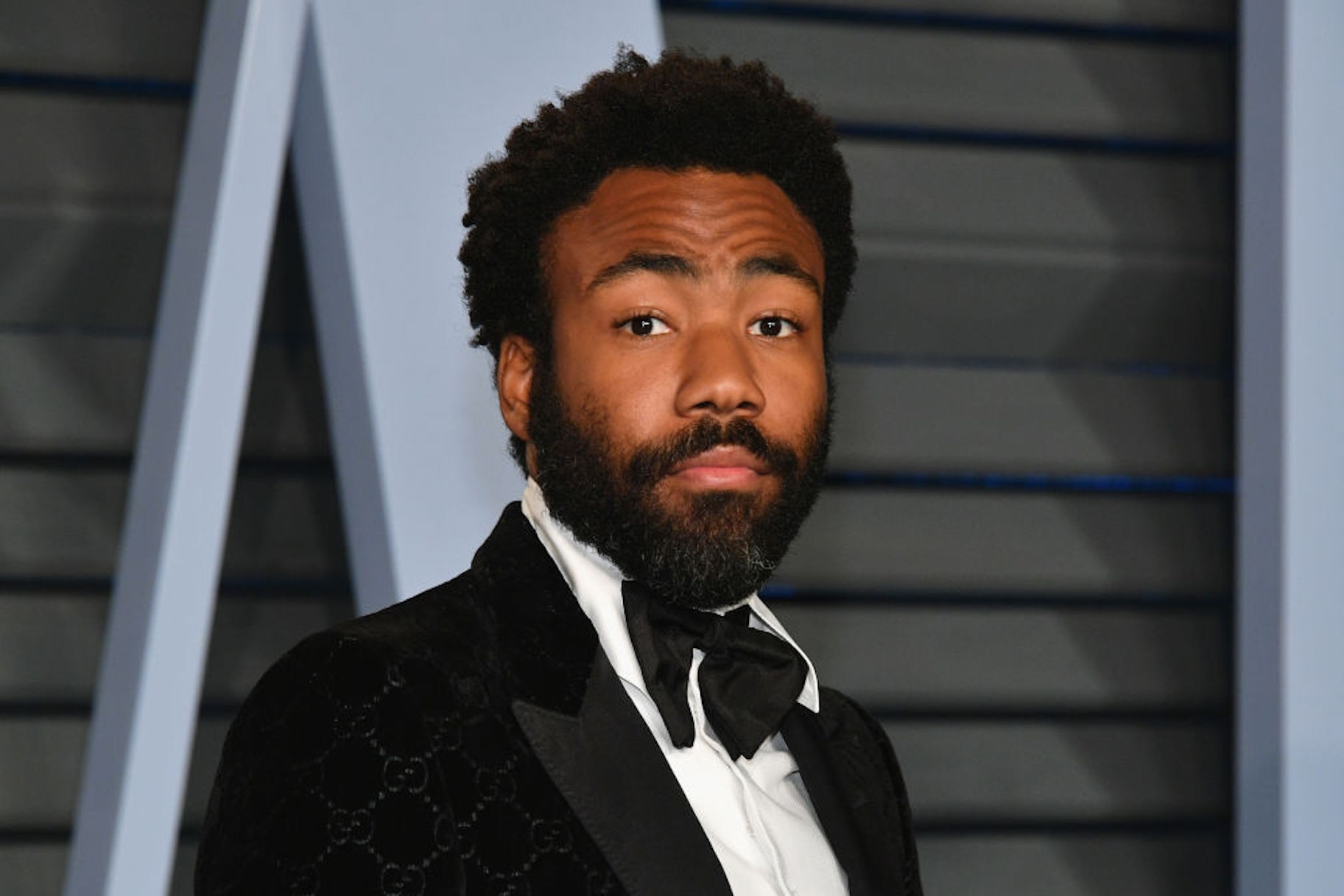Create a free profile to get unlimited access to exclusive videos, breaking news, sweepstakes, and more!
Childish Gambino's Shocking And Violent Take On America Is Exactly What We Need
Welcome to America.

"This Is America" starts with a bang— literally. A man wearing white linen picks up a guitar and sits in a chair. Childish Gambino, the music alter ego of actor Donald Glover, walks up and calmly shoots him in the back of the head. It's a stark visual—undoubtedly upsetting—but something you won't forget.
Directed by Hiro Murai ("Atlanta"), "This Is America" is a brutal, four-minute commentary on violence and indifference in America. An unending salvo, it's one of the most brilliant and timely messages on crime, race and punishment.
The horror of gun violence is a marked theme throughout from the first shots—many incorrectly identified the guitarist as the father of gunshot victim Trayvon Martin—to spraying an entire gospel choir with an automatic rifle. We hear of shootings all the time but to see the carnage in action is jarring, unsettling. As our country has ongoing discussions about gun control, especially in the aftermath of the mass shooting at Marjory Stoneman Douglas High School and March For Our Lives protests, Gambino's message of the destruction of guns is more important than ever.
Parkland, Orlando, Las Vegas. Mass shootings continue and there have been nearly a dozen in the past five years alone. So what happens to a society that is constantly exposed to ultra-violence? At some point, do we just stop caring and this becomes our new normal? That callousness is shown beautifully in the visual through Gambino's dance breaks, his cavalier smile after he shoots a bunch of people and in the kids watching the melee and recording the horror on their phones. Violence voyeurs; they're documenting the horror, ostensibly for clicks and likes on social media.
There's an entire commentary on distraction from the background visuals. If you look closely, you may catch singer SZA. Remember the guitarist shot in the first scene? His lifeless corpse is dragged away without a word. Don't blink or you may miss it. We're bombarded with so much chatter from media and technology every day, it's easy to zone out on what's going on.
There are many allusions to racism. The slain gospel choir likely represents the black worshippers who were killed in the 2015 Charleston Church Massacre, while the shooter walked away unscathed. Similarly, Gambino's pose in the opening sequence appears to be a nod to racist imagery used in America's Jim Crow-era, in which racial segregation was legally enforced.
Childish Gambino hits several different dance styles, including the South African Gwara Gwara and moves by BlocBoy JB, which have been co-opted by white people and artists. BlocBoy, Quavo of Migos, 21 Savage, Slim Jxmmi and Young Thug are popular artists who provide background vocals on the song. The symbolism here is how America often samples specific parts of black culture, such as hip-hop or dance, while remaining blind to the other issues facing black Americans.
In the final scene, we see Childish Gambino running for his life and he appears to be chased by white people. Perhaps he's running from the "sunken place" (as the scene seems reminiscent of the film "Get Out") or maybe he has to pay his dues for the violence he's inflicted. In the end, he doesn't have white privilege. Justice isn't blind and who he is will surely play a role in his punishment. And if the music video is any indication, America will be too distracted to notice.
[Photo: Getty Images, YouTube]





